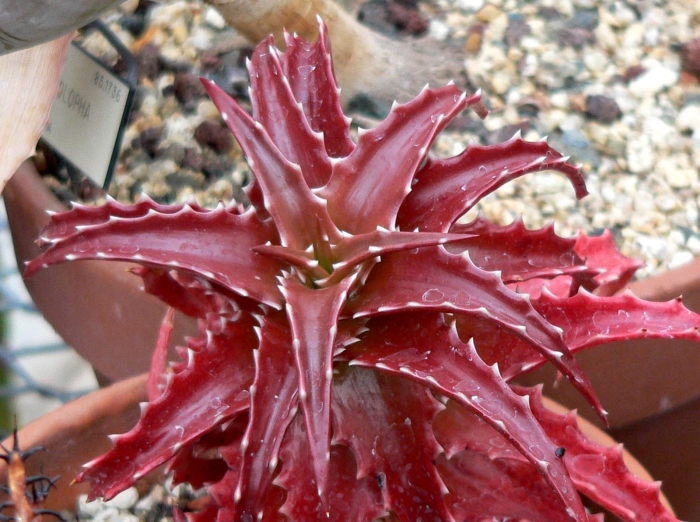Sunset Aloe
(Aloe dorotheae)
Sunset Aloe (Aloe dorotheae)
/
/

Stan Shebs
CC BY-SA 3.0
Image By:
Stan Shebs
Recorded By:
Copyright:
CC BY-SA 3.0
Copyright Notice:
Photo by: Stan Shebs | License Type: CC BY-SA 3.0 | License URL: https://creativecommons.org/licenses/by-sa/3.0 | Uploader: Stan Shebs | Publisher: Wikimedia Commons |


















Estimated Native Range
Summary
Aloe dorotheae, commonly known as Sunset Aloe, is an evergreen succulent native to rocky outcrops and open areas in Tanzania. It reaches a height of 1 foot (0.3 meters) and a width of 1-2 feet (0.3-0.6 meters). This species forms rosettes of recurved, spotted leaves with a glossy surface that intensifies to a reddish hue under drought stress or when exposed to full sun. The sprawling, decumbent stems enable it to form large clumps over time. Sunset Aloe is notable for its vibrant foliage and its ability to adapt to arid conditions.
Sunset Aloe is valued for its drought tolerance and striking leaf coloration, which makes it a popular choice for rock gardens, succulent collections, and as a container plant. It thrives in full sun to partial shade and requires well-drained soil, ideally with a summer-rainfall watering regime to mimic its native habitat. During the spring and winter, it produces tubular flowers in shades of yellow, orange, and red, which add to its ornamental appeal. While it is low-maintenance, it is sensitive to overwatering, which can lead to root rot. It is also susceptible to mealybugs and scale insects. Gardeners should be aware that Aloe dorotheae is a critically endangered species and should be cultivated responsibly.CC BY-SA 4.0
Sunset Aloe is valued for its drought tolerance and striking leaf coloration, which makes it a popular choice for rock gardens, succulent collections, and as a container plant. It thrives in full sun to partial shade and requires well-drained soil, ideally with a summer-rainfall watering regime to mimic its native habitat. During the spring and winter, it produces tubular flowers in shades of yellow, orange, and red, which add to its ornamental appeal. While it is low-maintenance, it is sensitive to overwatering, which can lead to root rot. It is also susceptible to mealybugs and scale insects. Gardeners should be aware that Aloe dorotheae is a critically endangered species and should be cultivated responsibly.CC BY-SA 4.0
Plant Description
- Plant Type: Succulent
- Height: 0.8-1 feet
- Width: 1-2 feet
- Growth Rate: Slow
- Flower Color: Yellow, Orange, Red
- Flowering Season: Spring, Winter
- Leaf Retention: Evergreen
Growth Requirements
- Sun: Full Sun
- Water: Very Low, Low
- Drainage: Fast
Common Uses
Bee Garden, Bird Garden, Drought Tolerant, Fire Resistant, Hummingbird Garden, Low Maintenance, Potted Plant, Rabbit Resistant, Rock Garden
Natural Habitat
Rocky outcrops and open areas in Tanzania
Other Names
Common Names:
Scientific Names: , Aloe dorotheae, Aloe dorothea, Aloe harmsii,
GBIF Accepted Name: Aloe dorotheae A.Berger